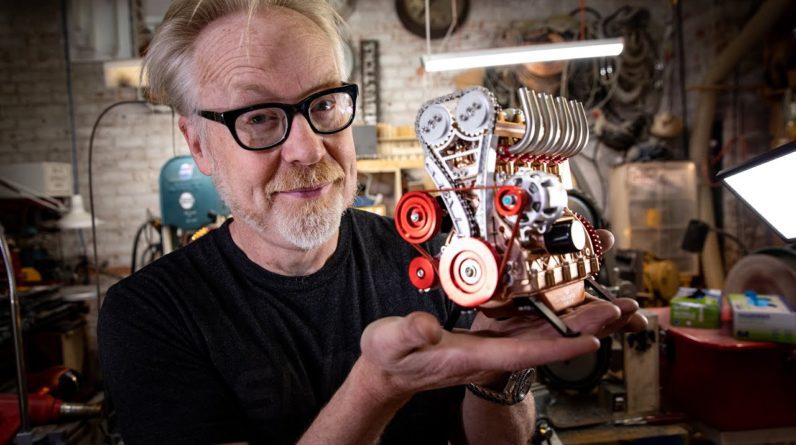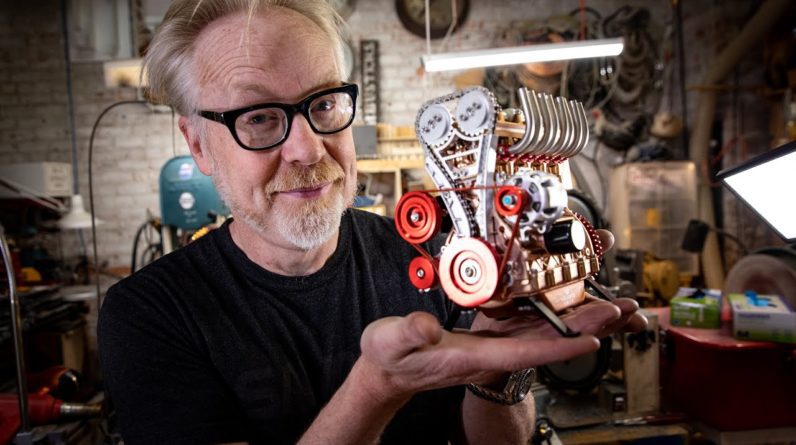In today's video. I will destroy the plastic fenders. I'll make new handles I'll use a unique sail material I'll make some scratches. and paint white stripes Hello, fellow modellers. I like WW2 tanks, so I want to build the legendary Soviet IS-2 heavy tank. I chose a kit from Zvezda. It's a snap kit and it's very simplistic. In each case. After minor adjustments, we can make a decent model out of it.
The drive wheel has a lip between the teeth. As a result, there is a danger of removing more than the plastic from the sprue. Be careful here. The parts fit tightly. Actually more than needed and sometimes parts crack under pressure. It's annoying because the kit is primarily designed for assembly without glue. You can correct these problems by creating larger gaps in the joint. All parts require special care.
Here you can at least remove the casting lines. The belts are molded from one piece and have softened joints for both. I've built this kit twice now and had a problem primarily with this section. I used glue once and the strips fell apart. Also, do not glue the drive wheel. You have to adjust the correct rotation of the teeth later. And one more tip.
Assemble the tracks and the whole model and then paint them. I resized the pin as it was very large and fixed it with a second glue. It is possible to buy a new metal barrel, but this plastic one is not the worst. The opening for the massive 122mm gun is quite large even in this small 1/72 scale. 😀 Then we drill a hole in the muzzle brake. And the front light. I learned how to drill these parts while still in the frame. Handling is more convenient. Let's do some battle damage.
In the photos of the actual machine, you may notice that the fenders are missing or badly damaged. This kit is one of the cheapest, so cutting or destroying some sections is not painful. I decided to remove the front fenders. Emphasize the shapes of the tank's armor and belts. I make some fenders bent and torn. You don't need expensive metal parts to make it realistic. The important thing is to thin the plastic to the minimum thickness, then it is like paper and you can shape it as you want. It looks like a different model without the fenders. The Zvezda kit is not super accurate and some of the shapes are wrong. Like this front armor shape. It was actually cast in one piece and should be more round. The texture of the armor joints and welds is also missing.
The link shows a picture from the test range. I imitate them with an ordinary sharp blade. The plastic is relatively soft so this is not a problem. If you have micro drills, you can deepen the window. Ok, more edits. Soviet casting and the entire production of tanks was primarily focused on speed. Quantity over quality. All the parts therefore had a very wrinkled texture as you can see here on the tower. An old and good technique is to thin Tamiya putty with nitrocellulose thinner and apply to the surface. Do the same on the tower, but not so fast. First we need to edit the details and fill in the joints. Plastic handles are fine as long as you don't have them broken. It is better to remove and make new ones from wires. It's great if you make holes for the wires. The remaining plasick acts as a template, so you don't have to measure the position afterwards. I use a similar technique for the other handles.


I glue them on, then fix the position and orientation, then cut them out. Leftover plastic makes a nice template for a drill. I want to create a casting texture on the surface of the turret. So I can't use Tamiya putty to fill the joints. Thinner can dilute it. That's why I need something more stable and durable. I think super glue is good for that. I accidentally got the putty on the parts, but I can easily clean it up with thinner. Welds. I use two layer epoxy putty and make thin snakes. While the mixture is still fresh, I apply it to the surface and imitate the texture of the weld with a toothpick.
I make new handles from copper wires. You can get the wires from old electronic coils or wires. These small modifications are time consuming, but a cheap toy can be made into a nice model. I will dent the fuel tank with a micro electric sander. The final step is more battle damage. I think a cool effect with a bounced hit. I make the hole with a sander and the raised metal with epoxy putty. And a few more deflected hits from small calibers. I had water leaking from my washing machine and dishwasher, so I used this plumber's tape on the threads. It's actually a pretty cool material, so I tried to make a sail for my model out of it. It is very flexible and holds its shape.
I glue only with PVA glue. (Herkules) I wanted to show how big the 122mm is, so I made two used cartridge cases. It was actually 31 inches tall. In the better metric system, it's roughly 78 centimeters. So quite a big pipe. I removed the three side fuel tanks and attached a wooden log in their place. I use a wooden skewer. All that remains is to create the texture of the bark with a razor saw. I got used to assembling the whole kit and then coloring it. It is important to cover the gray plastic with a dark shade. A black primer is good. If you leave out a part with the color, then the black base is less expressive than the light gray. I spray a multi-colored scratch effect. This means that the base is metallic. Then a special peeling varnish. Then a base red shade and peeling varnish again.
Now you can spray green camouflage paint over all these layers as you normally would. If you don't have all the shades, spray Soviet green, then add a few drops of light sand, brown or yellow. It is good to make a color modulation of at least three shades. Simply make the raised and prominent parts brighter than the rest of the surface. I mentioned the spray paint layers. It is essentially a varnish that can be diluted with water. And as you can see, after a layer of water, the varnish allows you to remove the top color layer. And if you applied multiple layers interspersed with varnish, then the resulting effect is quite realistic. I fix the surface with colorless varnish. After this layer, water no longer affects the surface. I can apply decals to the surface without any problem. The kit includes decals for strips, but it's better to paint them by hand like the real thing. I paint the imperfections white because the numbers are very uniform. I imitate dust and dirt on the tracks with dry pigments. Without fenders, they are more visible, so they require more care.
I unified the whole model with Matt Laquer. As a result, wear is more pleasant and oil paints hold better. And I am done with these details. I know this kit is cursed because I've tried to build it three times over the years. At least I learned new techniques each time. I know it's frustrating when you don't finish a model, but we learn from mistakes. Ok, next time a bigger model airplane for a change. Thanks for watching and see you next time.
Here is the iron beast..






